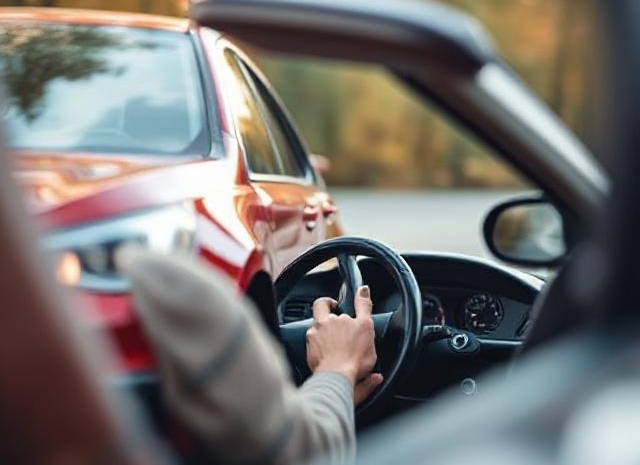
The Role Of Vehicle Safety Features In Lowering Insurance Costs
Vehicle safety features play a crucial role in lowering auto insurance costs. Insurance companies consider the safety of your car when determining your premiums, as cars equipped with certain safety features are generally less likely to be involved in accidents or cause significant damage. This reduces the risk to the insurer, which often results in lower rates for drivers.
Here’s how various safety features can help lower your car insurance premiums:
1. Anti-Lock Braking System (ABS)
Anti-lock brakes prevent the wheels from locking up during an emergency stop, reducing the risk of skidding. Cars with ABS are safer, especially in slippery conditions, and can prevent accidents.
- Impact on insurance: Vehicles equipped with ABS may qualify for a discount because they are less likely to be involved in an accident, especially in poor road conditions.
2. Airbags
Airbags are designed to deploy during a collision, reducing the impact on the occupants and minimizing injuries. Common types include front, side, and curtain airbags.
- Impact on insurance: Cars with airbags, particularly newer models with multiple airbags, often enjoy lower insurance premiums. This is because airbags significantly reduce the likelihood of serious injuries and, as a result, reduce medical costs in the event of an accident.
3. Anti-Theft Devices
Anti-theft systems, including alarms, GPS tracking, steering wheel locks, and ignition kill switches, help prevent your car from being stolen.
- Impact on insurance: Many insurance providers offer discounts for vehicles with anti-theft devices because they reduce the likelihood of your car being stolen. If your vehicle is less likely to be stolen, the risk for the insurer is lower.
4. Electronic Stability Control (ESC)
ESC helps prevent skidding and loss of control by automatically applying brakes to individual wheels when necessary. This is especially useful during sharp turns or when driving in slippery conditions.
- Impact on insurance: Vehicles equipped with ESC are considered safer because they help reduce rollover accidents and loss of control. Insurance companies may provide discounts for cars with this feature, as it lowers the risk of accidents.
5. Lane Departure Warning and Lane-Keeping Assist
These systems alert drivers when they unintentionally drift out of their lane, and some can even steer the car back into the lane automatically.
- Impact on insurance: Insurance companies view these systems as a way to prevent accidents caused by distracted or drowsy driving. Cars with lane departure warning and lane-keeping assist may receive discounts because they help prevent collisions, especially on highways.
6. Blind Spot Monitoring
This feature alerts the driver when there’s a vehicle in the blind spot, making it easier and safer to change lanes.
- Impact on insurance: Blind spot monitoring reduces the risk of side-impact accidents during lane changes. Insurers may offer discounts for cars with this feature because they help reduce accidents.
7. Adaptive Cruise Control
Adaptive cruise control automatically adjusts the car’s speed to maintain a safe distance from the vehicle in front. It’s especially useful on highways and in stop-and-go traffic.
- Impact on insurance: By helping maintain a safe distance between cars and reducing the chance of rear-end collisions, adaptive cruise control can lower accident rates. Insurers may offer lower premiums for vehicles equipped with this feature.
8. Forward Collision Warning and Automatic Emergency Braking
These systems detect an impending collision and either alert the driver or automatically apply the brakes to reduce the impact or avoid the collision.
- Impact on insurance: Vehicles with forward collision warning and automatic emergency braking are seen as less likely to be involved in accidents. Insurance companies often provide discounts because these features reduce the likelihood of high-cost accidents, especially rear-end collisions.
9. Rearview Cameras and Parking Sensors
Rearview cameras and parking sensors assist drivers in avoiding obstacles when reversing. These are particularly useful for preventing accidents in parking lots or when backing out of driveways.
- Impact on insurance: Cars equipped with rearview cameras and parking sensors are less likely to be involved in low-speed collisions, such as fender-benders in parking lots. As a result, insurers may offer discounts for cars with these safety features.
10. Crash-Test Ratings
Cars that have high safety ratings from agencies like the National Highway Traffic Safety Administration (NHTSA) or the Insurance Institute for Highway Safety (IIHS) are considered safer and less likely to be involved in accidents or sustain serious damage during a crash.
- Impact on insurance: If a car has a high safety rating, it may be eligible for lower insurance rates. Insurance companies will assess the safety of the vehicle based on crash-test ratings, and vehicles with top ratings are generally considered less risky to insure.
11. Telematics and Safe Driving Programs
Many insurance companies offer telematics programs (e.g., usage-based insurance), where your driving habits are monitored through a device or app. If you drive safely, you can earn discounts based on your driving behavior.
- Impact on insurance: If your vehicle has telematics that track your driving habits, and you demonstrate safe driving (e.g., no sudden braking, speeding, or harsh turns), you could qualify for a discount. Safe driving habits combined with safety features can lead to reduced premiums.
Additional Considerations:
- Age and Model of the Car: Newer cars generally come with more advanced safety features, and some insurers offer discounts for cars that include these features. However, the overall age and model of the car can also affect premiums, as older vehicles might not have these features.
- Location and Driving Habits: The likelihood of using certain safety features (such as adaptive cruise control) may vary depending on where you live and your driving habits. For instance, a vehicle equipped with advanced features might be more useful on highways than in city driving.

